The Doleshwor Mahadev Temple in Suryabinayak, Nepal's southernmost district of Bhaktapur, is a sacred site where spirituality, mythology, and history are woven into an amazing tapestry. This temple is dedicated to Lord Shiva, one of the most significant deities in Hinduism, and is believed to be the head part of the Kedarnath Temple located in Uttarakhand, India.
As you approach the temple, the lush greenery that surrounds it and the gentle sound of the nearby streams create a deeply peaceful atmosphere. With its delicately carved wooden framework and pagoda-style design, the temple's architecture contributes to its visual appeal. Visitors and devotees alike are drawn to this holy ground not only by its spiritual attraction but also by the breathtaking natural beauty that surrounds it.
For decades, Doleshwor Mahadev has been a respected pilgrimage site, attracting a steady stream of devotees seeking blessings, spiritual enlightenment, and peace. The temple's spiritual resonance is apparent and it is often recognized as a location where one can connect with the holy on an extremely personal level. Whether you're a devoted Hindu or a traveler seeking cultural and spiritual experiences, the Doleshwor Mahadev Temple welcomes you with open arms, offering a sacred environment for self-reflection, devotion, and a deep connection with the divine.
Doleshwor Mahadev Temple Facts
|
Site |
Doleshwor Mahadev |
|
Affiliation |
Hinduism |
|
Deity |
Lord Shiva |
|
Location |
Suryabinayak, Bhaktapur |
|
Established By |
N/A |
|
Major Attractions |
|
|
Major Celebrations |
|
|
Style |
|
|
Opening Hours (main temple) |
05:00 AM - 12:00 PM 01:00 PM - 07:00 PM |
|
Entry Fee |
No Entry Fee |
History and Mythology
The history and mythology of the Doleshwor Mahadev Temple in Nepal's Bhaktapur district is deeply connected with Hindu mythology and religious traditions. Even though specific historical records are extremely rare, the origin and significance of the temple can be found in ancient mythologies.
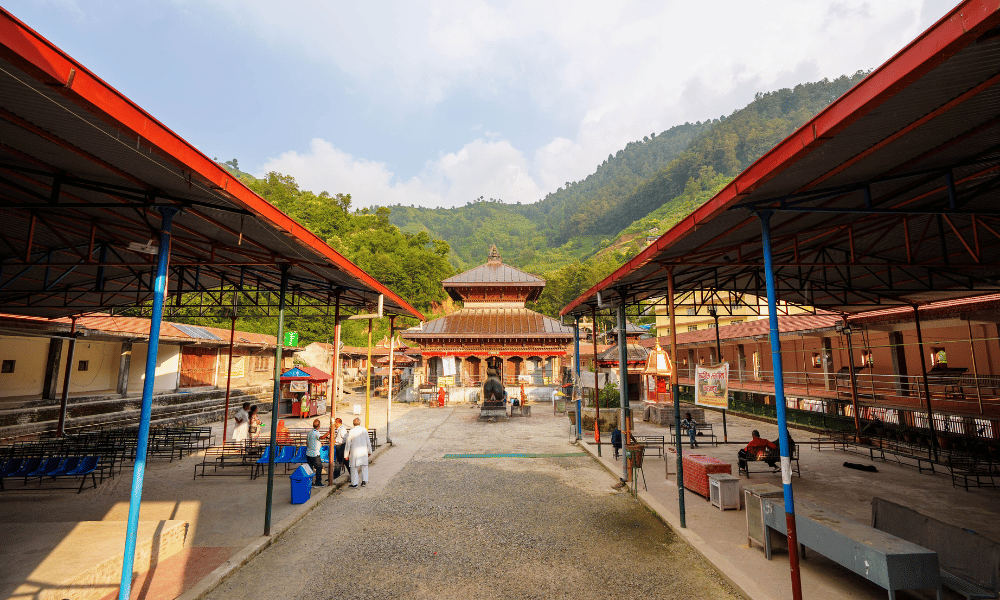
The epic Mahabharata, one of the most revered texts in Hinduism, is the source of the majority of Doleshwor Mahadev Temple's origin and significance. According to local tales and Hindu mythology, this temple is where an important event happened during the Pandavas' quest to atone for the sins of Gotra Hatya (Killing Family Members) and Brahmanahatya (killing of Brahmins, the priest class) they committed during the war.
According to legend, after the Mahabharata war, the victorious but greatly regretful Pandavas went on a pilgrimage to seek forgiveness for their sins. Thus, they entrusted their kingdom to their relatives and set out to find Lord Shiva and seek his blessings. First, they traveled to Varanasi (Kashi), considered to be Shiva's favorite city, however, Lord Shiva wished to avoid them since he was furious by the death and dishonesty at the Kurukshetra war and, as a result, was blind to the Pandavas' requests. Consequently, he took the appearance of a bull (Nandi) and hid in the Garhwal region. The Pandavas, unable to locate Shiva in Varanasi, traveled to the Garhwal Himalayas, where they encountered a bull who was actually Lord Shiva in disguise. Bhima instantly identified the bull as Shiva and grabbed the bull by its tail and rear legs. However, the bull-formed Shiva vanished into the ground, only to emerge in pieces, with the hump rising in Kedarnath, the arms emerging in Tungnath, the face appearing in Rudranath, the Nabhi (navel) and stomach appearing in Madhyamaheshwar, and the hair appearing in Kalpeshwar. The Pandavas, pleased by Lord Shiva's reappearance in five distinct forms, constructed temples at each of the five locations to honor and honor Lord Shiva. Thus, the Pandavas were forgiven for their crimes. It is believed that Lord Shiva's head manifested at the Doleshwor Mahadev Temple in Bhaktapur, Nepal.
The Doleshwor Mahadev Temple was recognized as the head portion of the Kedarnath Temple on August 22, 2009, after the head priest of Kedarnath Peeth Shree 1008 Jagat Guru Bheemashankarling Shivachary unveiled a plaque claiming as much. Until then, the Pashupatinath was believed to be the head part of Lord Shiva.
The temple has become more well-known in recent years as a result of its connection to the Indian Kedarnath Temple. Some believe worship at the Doleshwor Mahadev Temple has the same spiritual merit as worship at the Kedarnath Temple. This connection has enhanced the number of pilgrims and interest in the temple.
Cultural and Religious Importance
The Doleshwor Mahadev Temple in Bhaktapur, Nepal, possesses immense cultural and religious significance, which is deeply steeped in Hinduism's traditions and local culture. Its significance goes beyond its architectural beauty, making it a renowned site for both spiritual and cultural devotion.
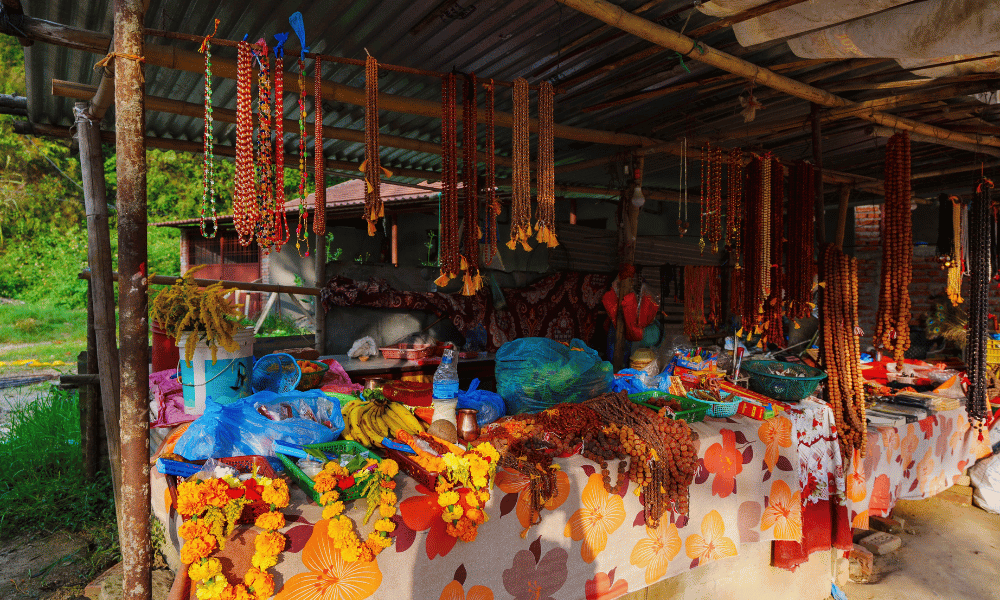
The temple's religious significance comes primarily from its association with Hindu mythology and the belief that it houses Lord Shiva's head. As the Doleshwor Mahadev is connected to Kedarnath, one of the Char Dham destinations, it is thought that their journey to the four principal adobes (Char Dham) can only be considered complete after visiting it. All of Doleshwor's prayers, from the morning rituals to the evening arati, follow the guidelines of the Kedarnath Temple. It is believed that visits to all of these temples cleanse one's sins and receive the divine blessings of Lord Shiva. This makes Doleshwor Mahadev Temple an essential pilgrimage site for devotees.
The temple's architecture reflects the diverse cultural history of the Kathmandu Valley. Traditional pagoda-style designs, intricate wood engravings, and exquisitely crafted wooden structures characterize Newari architecture. Natives of the valley, the Newars have a long history of constructing magnificent temples and structures. The temple is not only a place of worship, but also an architectural masterpiece whose aesthetic attractiveness contributes to Nepal's cultural tapestry.
Nepalese and non-Nepalese devotees visit the Doleshwor Mahadev Temple throughout the year for various Hindu festivals and special occasions. Festivals such as Shivaratri and Teej are celebrated with devotion and delight at the temple, filling the air with festivity. The peaceful surroundings and spiritual energy of the temple create a sacred space for devotees to connect with the divine and observe Nepal's cultural and religious traditions.
The Doleshwor Mahadev Temple exemplifies Nepal's harmonious blend of cultural and religious elements. It is a symbol of religious devotion and aesthetic excellence, attracting both spiritual seekers and cultural enthusiasts interested in the region's architectural and mythological heritage.
Major Attractions
The Doleshwor Mahadev Temple in Bhaktapur, Nepal, is a place of both spiritual admiration and beautiful architectural design. Although its religious significance is the primary attraction, this holy site is also popular with tourists for other reasons.
Architecture of the temple
Doleshwor Mahadev Temple is a beautiful example of traditional Newari architecture, with fine woodwork and a pagoda-style design. The architectural splendor of the temple is a monument to the rich legacy of Nepal's Kathmandu Valley.
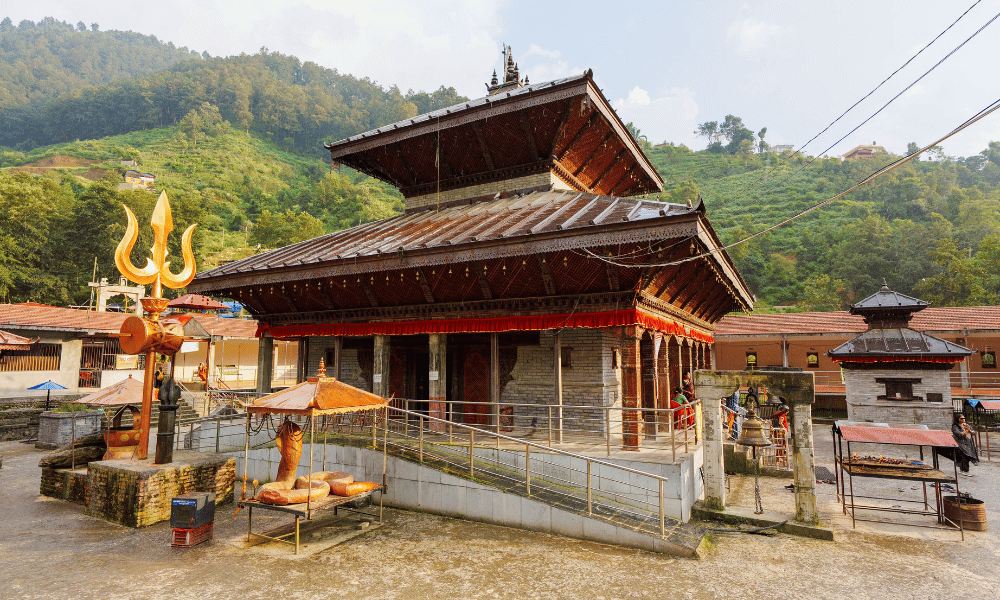
The pagoda-style structure of the temple consists of multiple tiers, each of which is decorated with intricately carved wooden elements. Wood carvings portray mythical designs, religious symbols, and elaborate patterns typical of Newari artistry. These sculptures serve a symbolic function as well as being decorative, carrying profound spiritual and cultural messages. The temple's tiered roof ends in an elegant spire, adding to its overall appeal and elegance.
The abundant use of wood, a trademark of Newari construction, is one noteworthy feature of the architecture of Doleshwor Mahadev Temple. The wooden pillars, supports, and beams are not only structurally significant, but they also serve as canvases for the beautiful carvings that portray deities and celestial beings and tell stories from Hindu mythology. The interplay of wood and creativity produces a warm and culturally rich atmosphere that invites visitors to appreciate the temple as a place of worship as well as a living witness to Nepal's architectural legacy.
Huge Trishula In The Premise
The trishula is a three-pronged metallic staff or spear-like instrument that can be found in the temple. Each of the three prongs extends outward from a central point. This trishula in the temple is made up of brass and also has the Bhole’s Damaru. The enormous trishula that can be located on the premises of the temple is crafted out of copper and stands around one story tall.

The trishula (trident) within the Doleshwor Mahadev Temple has great religious importance in Hinduism as a representation of Lord Shiva's glorious characteristics. The trishool embodies the balance of cosmic powers and the cycle of life, representing Lord Shiva's supremacy over the fundamental forces of creation, preservation, and destruction. It is seen as a source of divine protection, capable of repelling evil forces and granting blessings on people who worship it. Devotees and visitors regard the trishool as a precious object that increases their spiritual connection, making it a vital component of the temple's religious setting and Hindu cultural legacy.
Nandi’s Statue
Like many Hindu temples, the stone carved Nandi figure in the Doleshwor Mahadev Temple has a special place of respect and significance. The Nandi statue, which can be found within the temple grounds, portrays Nandi, Lord Shiva's sacred bull and loyal vehicle. This sculpture represents unshakable faith, loyalty, and Nandi's position as both a guardian and a messenger of prayers to Lord Shiva.
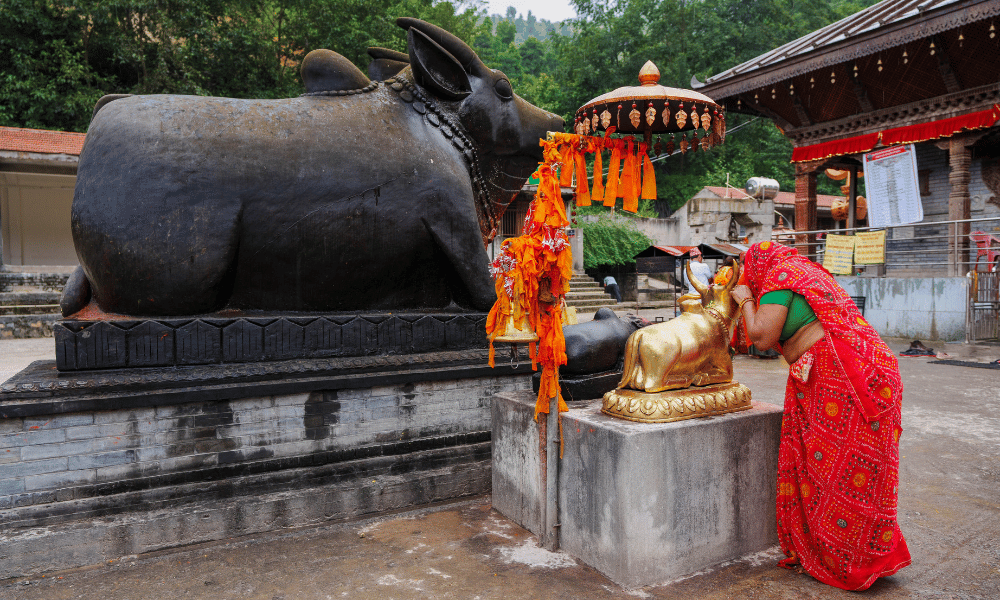
Devotees pay their respects and pray to Nandi, believing that the bull would carry their prayers and devotion to the deity. Aside from its religious significance, the Nandi statue is frequently aesthetically made, which adds to the temple's visual appeal. It is a monument to Lord Shiva and Nandi's intimate friendship, symbolizing the notion of devotion at the heart of Hindu mystical beliefs.
Principle Shiva Linga
In the Doleshwor Mahadev Temple, the Shiva Linga is the central religious and spiritual symbol that represents Lord Shiva's divine presence. This sacred and ancient representation of Lord Shiva has a uniquely shaped upper portion, and is set within a yoni base to signify the union of male and female energies, Shiva and Shakti. The Linga is crafted from black stone and is regarded as an extension of Lord Shiva's vast cosmic energy and supreme consciousness. Worshiping the Shiva Linga, devotees believe, can lead to spiritual enlightenment and freedom from the cycle of birth and death.
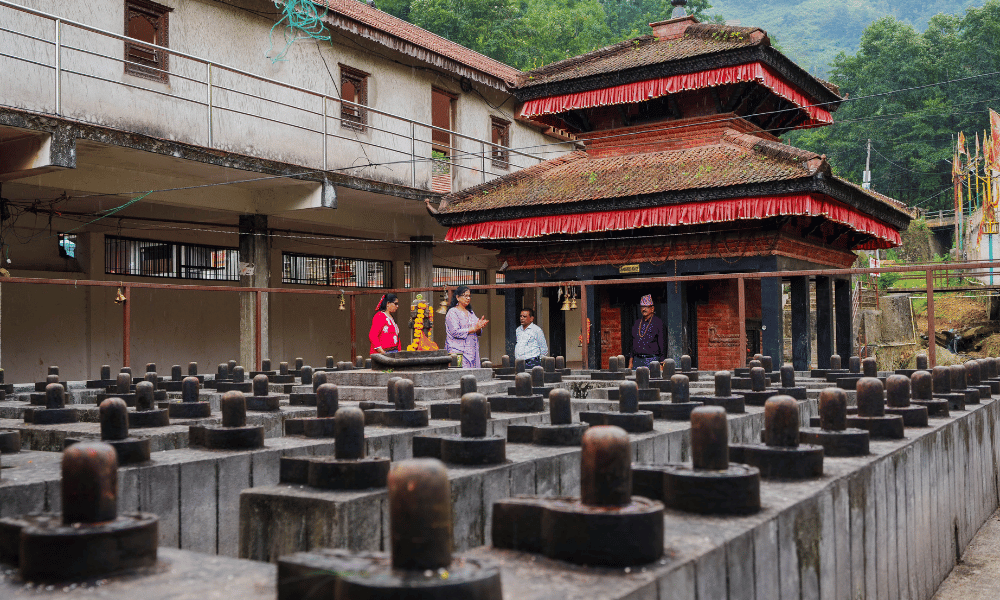
The Shiva Linga in the Doleshwor Mahadev Temple is the center of worship and rituals. Pilgrims visit the temple to perform Abhishekam (ritual bathing) with holy water, milk, and other sacred substances on the Linga, accompanied by prayers and hymns. The presence of the Linga in the interior chamber of the temple creates an atmosphere of intense spirituality, luring devotees into meditation and inner reflection. It represents the ever-present divine energy and serves as a means for devotees desiring Lord Shiva's blessings, guidance, and spiritual enlightenment to connect with him.
Major Celebrations
Throughout the course of the year, the Doleshwor Mahadev Temple plays host to a number of significant festivities and festivals, which attract both devotees and visitors in search of spiritual experiences:
Shivaratri
The Doleshwor Mahadev Temple in Bhaktapur, Nepal, celebrates Shivaratri, an auspicious Hindu festival dedicated to Lord Shiva, with great fervor and devotion. Depending on the lunar calendar, the celebration typically takes place during February or March.
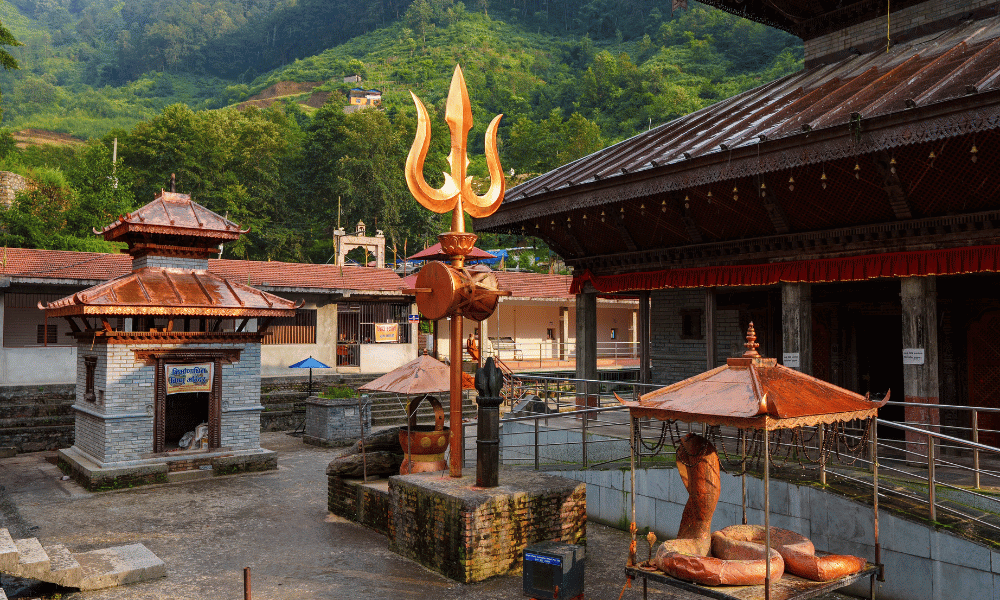
On Shivaratri, the temple grounds are filled with countless devotees and pilgrims paying homage to Lord Shiva. The festivities start with elaborate and traditional rituals conducted by priests of the temple. These ceremonies frequently include the offering of various sacred products such as milk, yogurt, honey, and holy water to the principal Shiva Linga and the Nandi statue.
Devotees engage in prayer, meditation, and the recitation of Shiva's mantras throughout the day and night. The air is filled with spiritual energy and a sense of intense devotion. Many followers observe fasts and spend the night in prayer, singing bhajans (devotional songs) and listening to religious discussions.
Shivaratri is celebrated at the Doleshwor Mahadev Temple by lighting oil lamps, ringing bells, and chanting "Om Namah Shivaya," a sacred mantra dedicated to Lord Shiva. The festival is not only a time of religious observance but also a cultural celebration that brings the community together in worship and spiritual reflection. It is a vibrant and holy occasion during which devotees pray to Lord Shiva for inner peace, spiritual enlightenment, and liberation.
Learn More: Shivaratri Festival
Shrawan Mela
Shravan Mela, also known as Shravan Mahina, is a particularly significant and auspicious month in the Hindu calendar, dedicated to Lord Shiva. During this month, devotees do numerous rituals and offer prayers in order to gain Lord Shiva's blessings. Shravan Mela is a significant occasion for pilgrims and devotees in Nepal, and holds a special place in the Doleshwor Mahadev Temple due to its association with Lord Shiva, even though specific celebrations may vary across different places.
During the month of Shravan, devotees visit Shiva temples to perform Abhishekam (ritual bathing) of the Shiva Linga with sacred substances including water, milk, honey, and Belpatra (Bilva leaves). In addition to fasting and meditation, they recite sacred mantras dedicated to Lord Shiva.
As an essential site associated with Lord Shiva, the Doleshwor Mahadev Temple experiences increased foot traffic and devotion during the Shravan Mela. Pilgrims and devotees visit the temple to partake in these rituals and to seek Lord Shiva's divine blessings, making this a spiritually vibrant and significant time at the temple.
Bala Chaturdashi
Bala Chaturdashi, also known as Satbij Chaturdashi, is a Hindu festival that is observed with great reverence in the Kathmandu Valley of Nepal, particularly by the Newar community. It occurs on the fourteenth day (Chaturdashi) of the dark fortnight in the Hindu month of Kartik, which typically falls in October or November in Gregorian calendar. Bala Chaturdashi has significant cultural and spiritual significance, despite the fact that it may not be as widely celebrated as other key festivals in Nepal.
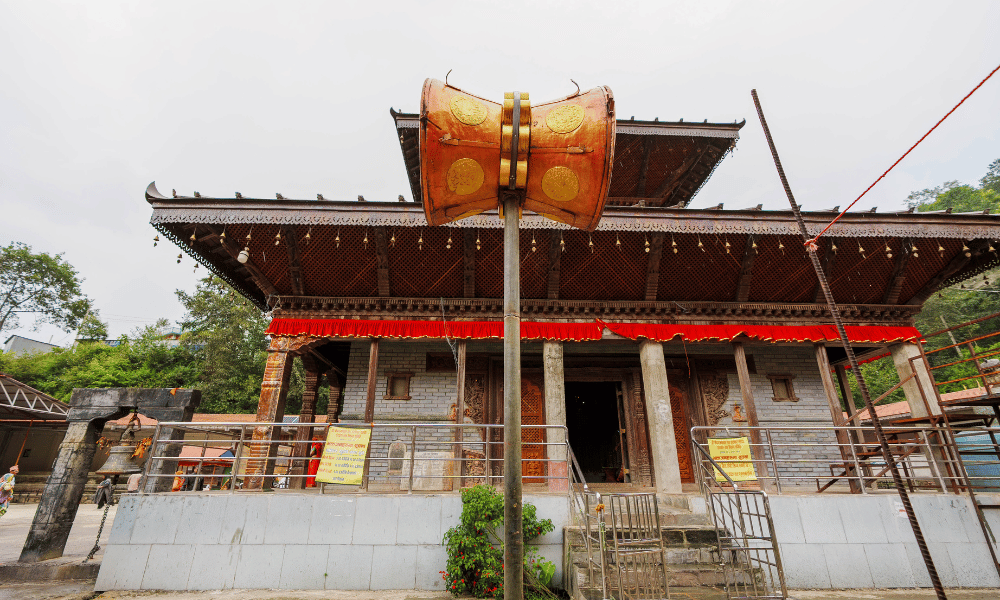
The central theme of Bala Chaturdashi is remembering and honoring ancestors and deceased family members. It is believed that by performing rituals and ceremonies on this day, individuals can assist the souls of their deceased loved ones in achieving peace and freedom in the afterlife. This festival provides a unique opportunity for families to gather and honor their ancestors, thereby strengthening ties of family and tradition.
On Bala Chaturdashi, families typically rise early in the morning to take a religious bath in rivers or ponds considered sacred. They then visit temples, such as the Doleshwor Mahadev Temple and Pashupatinath Temple, to pray and conduct rituals for the souls of the departed. To create a sacred atmosphere, special offerings of sesame seeds, rice, fruits, and flowers are made to deities, and incense is ignited. Devotees also light oil lamps, known as "Diyo," to represent the light that guides the spirits of the departed to salvation.
The Doleshwor Mahadev Temple, renowned for its spiritual atmosphere and association with Lord Shiva, is an appropriate location for these memorial ceremonies. The occasion is made more sacred by the tranquil environment of the temple and the presence of the primary Shiva Linga. Families also engage in collective prayers and bhajans (devotional songs) to invoke blessings for their ancestors' spirits.
Teej Festival
Teej is a vibrant and significant Hindu festival that is primarily celebrated by women in Nepal, particularly in the Terai region and among the Hindu community. During this auspicious season, many devotees visit Shiva Temples such as Doleshwor Mahadev Temple, which holds immense cultural and religious significance in Nepal and attracts a large number of worshippers.
Teej typically occurs in the Nepali month of Bhadra (August to September) and lasts for multiple days, with the most important day being known as "Hartalika Teej." This festival is celebrated to seek the deity Parvati's blessings for marital happiness, the health of one's spouse, and the longevity of one's loved ones. It also celebrates the reunification of Lord Shiva and Parvati, who are believed to have united on this day.
During Teej, women and young girls wear elaborate red sarees, decorate their hands with intricate mehndi (henna) designs, and fast from dawn until dusk without consuming food or water. The fast is interrupted after a special evening ceremony. Frequently, the puja includes the lighting of oil lamps, the offering of flowers and fruits to the deity Parvati, and the singing of devotional songs. As a sacred site dedicated to Lord Shiva, the Doleshwor Mahadev Temple draws a lot of devotees during Teej who come to seek blessings and offer special prayers to Lord Shiva and Parvati as a couple.
One thing that makes Teej celebrations unique is that women and girls lead large groups with music, dance, and lively cultural shows. Typically, these processions wind through the streets of cities and towns, creating a festive atmosphere. While the primary Teej festivities are observed in larger towns and cities, the temple likely experiences an increased number of devotees during this period, particularly from the nearby regions.
Learn More: Teej Festival
Janai Purnima
Janai Purnima, celebrated at the Doleshwor Mahadev Temple and throughout Nepal, is a significant Hindu festival that typically occurs on the August full moon. This holy event is marked by numerous rituals and customs, and it has profound religious and cultural significance.
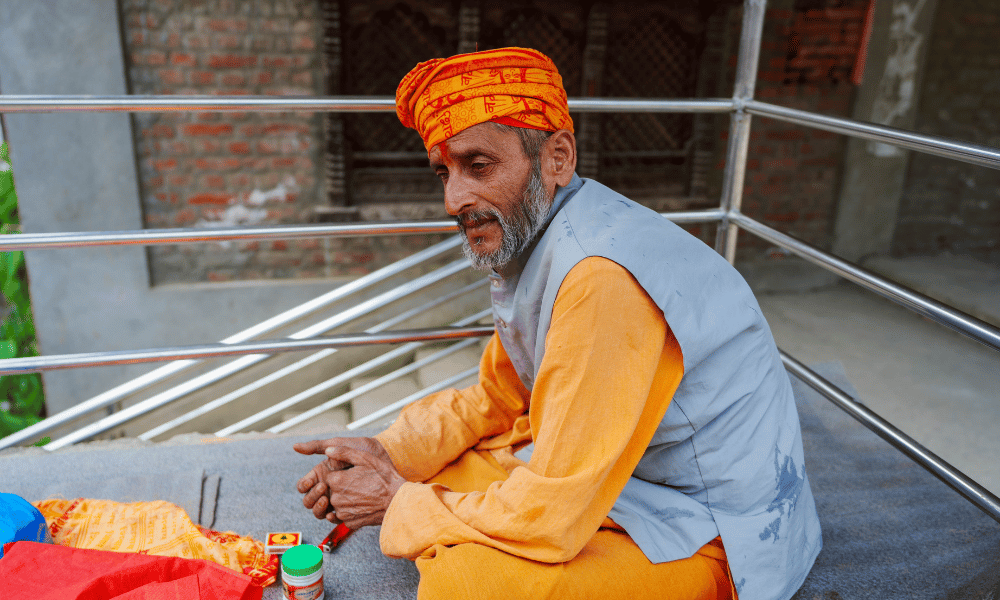
One of the most significant observances of Janai Purnima is the ritual of changing the sacred thread (Janai) worn by Hindu males, particularly those from the Brahmin and Chhetri communities. The sacred thread represents purity and protection and is an essential component of a man's attire. To participate in this ceremony, Hindu men come together at temples and holy sites, including the Doleshwor Mahadev Temple, on this day.
The ritual comprises the replacement of the old Janai with a new one while mantras and prayers are recited. People believe that by changing their Janai on this auspicious day, they renew their spiritual oaths and purify themselves of physical and spiritual impurities. The act of tying the sacred thread symbolizes the connection between the individual and the divine, and it is intended to provide protection and guidance on one's journey through life. This essential thread-changing ceremony has added significance at the Doleshwor Mahadev Temple, as it is dedicated to Lord Shiva, the temple's primary deity. Devotees assemble within the temple grounds to participate in these rituals, seeking Lord Shiva's blessings and reinforcing their faith and tradition.
During Janai Purnima, the tranquil and spiritual atmosphere of the Doleshwor Mahadev Temple, combined with the devotion of devotees and the resonance of mantras, creates a profound atmosphere. It is a time for self reflection, purification, and the strengthening of one's spiritual connection, making it a highly significant festival for all who participate in its rituals and celebrations.
How to reach Doleshwor Mahadev?
The Doleshwor Mahadev temple is located about 20 km east from the center of Kathmandu and around 16 km far from The Tribhuvan International Airport. Here are some ways to reach Doleshwor Mahadev Temple from Kathmandu:
By Private Vehicle
To get to the Doleshwor Mahadev Temple in Bhaktapur, Nepal, by road, you can start your trip in Kathmandu. Head east on the Araniko Highway (also called the Kathmandu-Bhaktapur Road), which will take you through the old city of Bhaktapur. Keep an eye out for signs or inquire with locals for directions to Suryabinayak as you travel along the highway. Once in Suryabinayak, you can ask locals for directions to the Doleshwor Mahadev Temple, which is located in this region. The drive provides picturesque views, and the location of the temple is easily accessible by road, making it a convenient pilgrimage site for visitors from Kathmandu and beyond.
By Hired Vehicle
One of the two main ways to get to the Doleshwor Mahadev Temple in Bhaktapur, Nepal, is to hire a vehicle. If you want convenience and flexibility, you can hire a vehicle from large cities such as Kathmandu, such as a cab or a private car. Kathmandu to the temple is approximately a 1 hour journey, depending on traffic conditions. Simply follow the Araniko Highway (Kathmandu-Bhaktapur Road) towards Bhaktapur, and then navigate through the city to reach the temple in Suryabinayak.
By Public Transportation
Those seeking a more economical option can reach Doleshwor Mahadev Temple via public transportation. From Kathmandu or Bhaktapur, go to a major bus terminal such as Ratna Park or Bhaktapur Bus Park and search for Suryabinayak-bound buses or microbuses. Once you reach Suryabinayak, the closest public transportation stop, you can either walk to the temple (a 15 to 20 minute walk) or take a taxi to the temple's entrance. It is recommended to consult with locals or at the bus terminals for accurate information on public transportation routes and timings, as they may vary.
Things to Remember
Before visiting the Doleshwor Mahadev Temple in Bhaktapur, Nepal, there are a number of essential considerations to bear in mind to ensure a smooth and respectful pilgrimage:
Dress Modestly:
As with the majority of religious sites, it is recommended to wear modest clothing when visiting the temple. As a sign of respect, wear clothing that covers your shoulders and knees.
Remove Footwears:
Before entering the temple, it is customary to remove your shoes or sandals. There are frequently designated locations for shoe storage outside.
Respect Local Customs:
Be mindful of local customs and traditions. Avoid public displays of affection and loud actions on temple grounds.
Silence and Respect:
While inside the temple, maintain a respectful and silent behavior. Refrain from loud conversation and disruptive conduct.
Ask for Permissions:
Request permission before photographing individuals, especially priests or devotees, as some may prefer not to be captured on camera.
Be Aware of Timings:
Check the temple's admission hours and plan accordingly. Darshan (worship) and rituals at temples occur at specific timings.
Respect Other Visitors:
Consider the spiritual experiences of other visitors. Do not interfere with their prayer or meditation.
Properly Dispose of Garbage:
Use designated trash cans to dispose of garbage, and assist in keeping the temple grounds clean.
By keeping these factors in mind, you can ensure that your visit to the Doleshwor Mahadev Temple is both respectful and meaningful for you and the local community.
Conclusion
Doleshwor Mahadev Temple, located in the heart of Bhaktapur, Nepal, is a site of deep spiritual significance. Its ancient origins, its aura of housing the claimed head of Lord Shiva, and the vibrant religious celebrations that beautify its grounds make it a captivating destination for pilgrims and tourists. The temple's complex Newari architecture, the peacefulness of its surroundings, and the rituals that take place within its sacred grounds all contribute to a culturally rich and immersive experience.
In addition to its physical and historical characteristics, the Doleshwor Mahadev Temple represents something more significant: the enduring devotion of its visitors. It serves as a reminder that spirituality is a universal language that surpasses differences and is not limited by borders. The temple invites people from all walks of life to gather in devotion and reflection, fostering a sense of unity and common humanity.
Let us take with us the lessons of devotion, unity, and reverence for diverse spiritual traditions that Doleshwor Mahadev Temple conveys. May its enduring aura serve to uplift, inspire, and unite souls on their spiritual and self-discovery journeys, bringing us nearer to the divine amidst the fullness of our common human experience.
Also Read: Pashupatinath Temple | Budhanilkantha Temple

